Beautiful, Fire-red poppy flowers in East can not be interested in their decoratively attractive view. Currently, this kind of garden poppies, got distribution due to varietal variety and unpretentious care. The cultivation of Mac East does not require special knowledge or special skills. It is enough to adhere to the basic landing rules and the agricultural scientists of perennials, detailed in the article.
Content
Mac Eastern Pressure, Description
- Mac East or, as it is also called small, is a perennial grassy plant of the poppy family.
- The Motherland is considered Western and Central Asia, the Caucasus, Turkey. In nature, it is often found at outdoor sunny places, by type of meadow or field.

- Stem in poppy - thickened, reprehensive, not branched, lowered from below. Its height varies from 30 to 100 cm, depending on the variety of the plant.
- Burnt poppy leaves are located on long stiffs. The length of the sheet, on average, is 25-30 cm, the form is a lanceal one. Stem leaves are characterized by a smaller size, and the top leaves are a seating location.
- Root system - rod, main root powerful, deep and pronounced. In this regard, the plant does not tolerate the transplant.
- Poppy flowers thickened and bristly, up to 35 cm long. The flower buds are oblong, also covered with bristles. The whores are large, bright red. Petals are different shades (orange, pink, red), with a black spot at the base. Flowers a perennial in May - June month.
- Poppy is presented with naked box with numerous small seeds.

- The disadvantage of the plant is the short-life and fragility of flowers, which are held on the stem no more than 3 days.
- Mac has not only a spectacular decorative species, but also valuable drug properties. In ancient Greece, it was used as a reliable sleeping and painlier.
- Ancient plant, poppy, became the object of breeders only at the end of the 19th century. Many varieties of poppies are derived for use in decorative flower growing. The varieties are distinguished by the color and size of flowers, the height of the bush and other, less significant, morphological signs.
Mac Eastern Perennial, Grade
The breeders withdrawn a number of varieties with a variety of color schemes of flowers. Red, pink, orange, salmon or apricot flowers can be terry or simple, with jested or smooth petals.
We give examples of the most popular varieties of Mac East:
- Sort "Allegro" (Allegro)
Tall and compact bushes (up to 70 cm) are seated with outlets from orange-red poppy flowers.
- Variety "Brilliant" (Brilliant)
Very tall bush (up to 90 cm), has single, scarlet, flowers. The grade is frost-resistant, poorly tolerates excessive humidity.
- Border Beauty Grade (Border Beauty)
High compact bushes (70 cm) are distinguished by numerous (30-40) semi-grade, scarlet, large flower petals on high flowering. The variety is frosty.
- Sort "Pizzikato" (Pizzikato)
Low variety, with large flowers of bright pink, white and orange shades.
- RosenPokal variety
High bush (70-100 cm), crowned with simple pink poppy flowers, without black spots at the base. The variety is frost-resistant, well multiplies the fission of the root.
- Sort "Beauty Queen" (Beauty Queen )
It is characterized by high blooms (90 cm), abundantly seated light orange, saucer flowers.
- Grace of Livermere "Beauty of Livermere" )
It has stable high blooms (120 cm) with aluminum flowers and a characteristic black core.
- Black and White grade (Black and White)
Spectacular variety, with large white, corrugated flowers and black core.
- Blue Moon grade (Blue Moon)
Tall bush (up to 100 cm) poppy, with large (25 cm in diameter) with pink flowers. Petals have a lightweight sizo-bluish tint and a black spot at the base.
- Sort "Cedric Morris" CEDRIC MORRIS
It features large, gentle, purple flowers with corrugated petals and a black spot at the base. Flowerines high (about 80 cm).
- Sort "Garden Glory" (Garden Glory)
One of the most decorative attractive varieties of poppy. Terry corrugated petals have gentle pink shades and a dark middle. Flowerines reach a length of up to 70-80 cm.
- Mrs. Perry variety (MRS Perry)
Color images up to 90 cm, medium-sized flowers, pink with black spot in the center.
- Sort "Kleine Tanzerin" (Kleine Tanzer)
The low variety, the flowers are growing up to 60 cm long. It is distinguished by an abundance on a bush of semi-terry, salmon, flowers with corrugated petals.
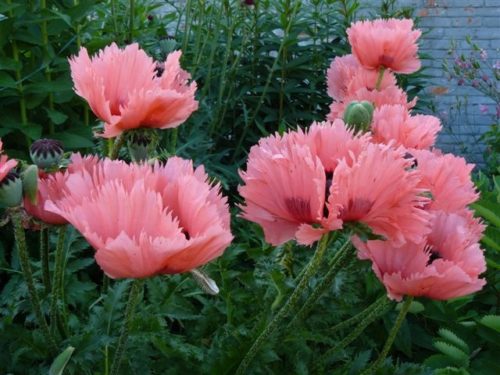
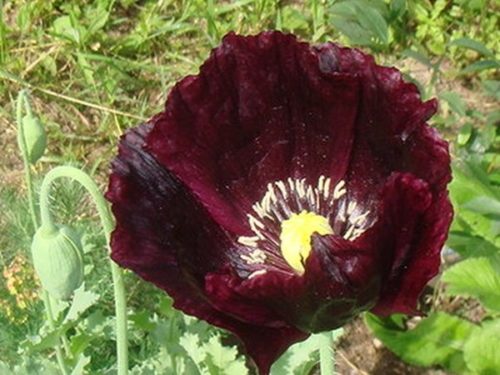
The reproduction of the poppies of the Eastern Perennial
The Mac Eastern multiplies in the main seed method, but the vegetative method of reproduction of perennial is also practiced - the division of the bush on parts or shilling.
A vegetative method of reproduction is guaranteed to retain all the varietal signs of the parent individual.
Reproduction of the poppy of Eastern Perennial Seeds
- East Mac Seeds can be bought in any specialized stores, at flower exhibitions or in nurseries.
- Poppy seeds are sown in spring or autumn. It is better to immediately sow a perennial at a permanent place, as it does not tolerate the subsequent transplant.
- Seeds are collected after the final ripening of the fetus - the boxes. When it becomes characteristic brown, dry and fragile, you can collect seed material. Sometimes the heads are wrapped in advance gauze so that the ripe seeds are not poured into the ground in the gusts of the wind.
- Seeds are pushed out of the holes of the lid boxes and store in a dry cool place. Store seeds better in paper sachet. Another way to store seeds is also practiced (not pouring out of the fruit box). Sliced \u200b\u200bdry boxes are stored in a dry place, and the seeds are removed immediately before sowing.
- If the ripe boxes from the bush are not assembled, the poppy will be chaotically multiply by self-sowing.
- Experienced flowers are recommended to conduct preliminary stratification of seeds, i.e. Hardening them with cold. This event helps to increase the endurance and the viability of future plants. Natural stratification can be carried out, living seeds in the cold season: early spring (even with soil frosts) or late autumn (in winter).
Vegetative reproduction of Mac East Perennial
- Poverty Poppy East is not always successful. The rod root of the plant is badly leaving in a new place, especially after division.
- Poppy bush dividing in summer, before or after flowering period. The bush is digging together with a lump of land, and separated it into several parts. Dellets are planted at a permanent place, in the prepared ground.
- Some gardeners practice the reproduction of perennials by shifting young sockets (side shoots). Cutted cuttings withstand a day in a disinfectant solution or growth stimulant ("corneser"). Then the shoots are rooted in the prepared ground. Initially, the crushed cuttings is better to cover with the film, to create a greenhouse effect and better germination. After rooting, shoots transplanted into open ground.
- To obtain rhizome cuttings, the perennial is digging, and some thick roots cut into parts. The upper cut of the cutter makes smoothly horizontally, and the bottom - the form. The cuttings are planted in the soil strictly vertically, completely covering them with soil. Moisturizing land and observing the necessary temperature regime (not lower than +10 0C), after 1-2 months, the first proges will appear. After germination, the plant transplant.
- Experienced flowerflowers make a poppy bush, not digging it completely, and snapping on the side and gently separating the rhizoma fragment for germination.
- In the first year, all lined up on the plot, cuttings, are covered with a special undercover material.
Mac Eastern Pressure, Face Planning
So that the Mac Eastern has retained its varietal qualities, its landing should be carried out separately from other types of poppy. This condition is necessary that the flowers are not overgrown with each other, and the varietal characteristics have not changed (for example, coloring, texture of petals).
Preparation for landing
- The place to land the poppy of East Perennial needs to be chosen given that culture grows in one place for more than 10 years and does not tolerate the transplant. Therefore, initially choose the appropriate place: open, sunny, without moisture. With regular flooding of the site, there is a risk of plant death, as the root can start rotting. For poppy cultivation will also be an easy half manual, while the complete shadow adversely affects the growth and flowering of perennial.
- Before boarding the poppy eastern, it is necessary to prepare a plot: remove weary grass, explode and fade up the land. You need to drag the soil deep, given the rapid growth of the main root in length.
- The fertilizer of the Earth is made by humus or compost (5-10 kg per 1 sq.m.) and a mixture of mineral fertilizers, at the rate of about 50 g per 1 sq.m.
- Mac Eastern - unpretentious culture, grows even on scant and acidic soils. But so that poppy flowers are not smaller over time, it is better to provide perennials of water permeable, samp, nutritious soils.
Sowing Mac East Perennial Seed
- The poppy seeds are very small, so they are not deep enough, almost on the surface layer of the soil, slightly sprinkled on top of the soil. Deep sowing can slow down the germination or seeds will not be able to germinate at all.
- To accelerate the germination process, the area can be covered with a film or glass. When shoots appear - shelter to remove.
- After seeding, it is important to ensure the constant humidity of the site. Watering to exercise moderate, sprayer (so as not to wash the seeds), without stagnation of water in the garden.
- With friendly and thick shoots, it is necessary to break them, at least, with an interval of 10 cm between plants.
- After shootings are growing, it is better to querce seedlings, leaving the strongest and healthy plants. The distance between the poppies leaves about 30 to 50 cm, given their further growth. Over time, adult poppywedheskiy bushes will take everything left by space.
- Already on the next, after sowing, a year, Maki will please abundant blossom.
- If the seeds were sown to the garden for the purpose of subsequent transplant, to do it extremely carefully, without damaging the roots of the sprouts. Pove the Poppy seedlings, when at least 5 leaves appear on the stem. Dipping seedlings is necessary, while maintaining the roar of the land. This will allow sponsors faster to take care of a new place.
- Poppy varieties are grown by a seedler. For this, the seeds are seeded into the container, put in a warm and bright place to germinate. Shoots appear in 2 weeks. In the phase of the second real leaflet, the seedlings carefully dive, the thin roots can be traumaous as possible. When 4-5 leaves appear - seedlings (with a lore land) are planted into open ground.
Mac East, plant care
Unpretentious, dough and frost-resistant plant - Mac East, requires minimal care and fulfillment of the main agrotechnical events.
- Watering
Thanks to the deep rod root system, the plant is easily "extracting" moisture even in dry weather. The drainstability of the poppy increases also at the expense of hairs and bristles, covering leaves and perennial stem. Therefore, drought Mac tolerates absolutely easy, but regular watering will still provide the best and abundant flowering of perennial. Stagnation of water on a plot with poppies is unacceptable, it can lead to the death of the plant.
- Mulching
The soil around the plant is mounted with peat or compost, preventing the appearance of weeds and keeping the wet microclimate.
- Feeding and making fertilizers
Fertilize the plant in the spring, before the beginning of the vegetative period. Organic or mineral fertilizers are entered in accordance with the instructions on the packaging.
- Garter
Tall poppy bushes (flowerons reaching 1 m) are subject to garter. Otherwise, the flowers can break and "go" to the ground.
- Fighting disease
The Mac Eastern is practically not amazed by pests. As for the disease, the most common is the black spot of leaves, false mildew and rotting roots. With the disease of the terrestrial parts of the poppy, they are treated with drugs containing copper (burglar liquid, copper vigorous, fungicides "Topaz", "Maxim"). The affected parts, while removing and burning. To prevent the root rotting, it is important to provide moderate soil moisturizing and its good drainage.
- Shelter for winter
The perennial is characterized by a high level of frost resistance, withstanding frost to - 40 0S. Shelting for the winter is subject to only gentle annuals, and still weak, shoots.
- Trimming
After flowering, the terrestrial part of the poppy gradually dies. If you do not plan to collect seeds, stems and poppy leaves are cut off (young shoots and leaves will appear only at the beginning of autumn). In this regard, it is important not to damage in summer field work on the flower bed, the "invisible" root of Mac.
- Transfer
If the transplant of a whole bush is required, the plant is digging (after flowering), while maintaining the naturally native roar lore, and transplant to a new place.
Application of Mac East
- One of the key intentions of the Poppy Eastern Pressure is decorative. Bright, fiery, large poppy flowers perfectly decorate any flower leaf. Unfortunately, the plant loses his decorative species immediately after flowering. Therefore, it is good to combine and combine the poppy with other cultures that will continue to bloom and, after moving the poppy, the emptiness of the site will be filled. So, the attractiveness and decorativeness of flower beds will preserve the maximum. Given the high poppy flowers, it is planted on the rear plans, placing down the lowest plants. The best compathers poppies will be autumnal blooming asters, chrysanthemums, dyedlines or laptops.
- For cutting, fresh poppies are practically not used, since there are no more than one day in a vase. More often cut off "proceeding" buds that are preserved longer in water.
- Dry shoots with poppy boxes are used when draming dry bouquets and flower compositions.
Thus, to grow Eastern on its site will be able to anyone who wants flower water. The main thing is to take into account the peculiarities of the plant when landing on the flower leaf and provide this unpretentious elemental and simple care.

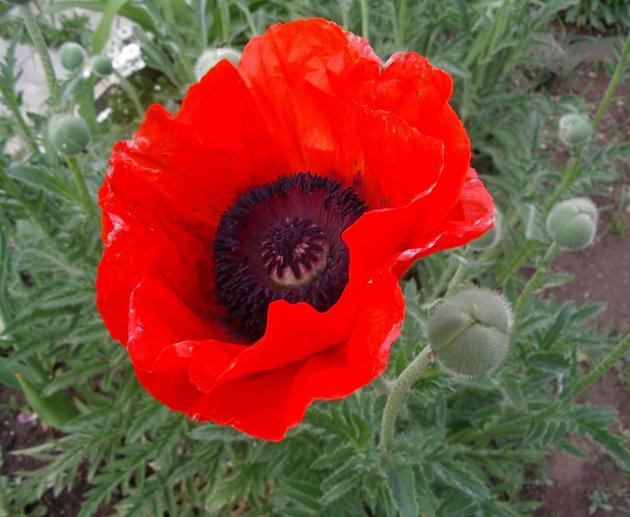
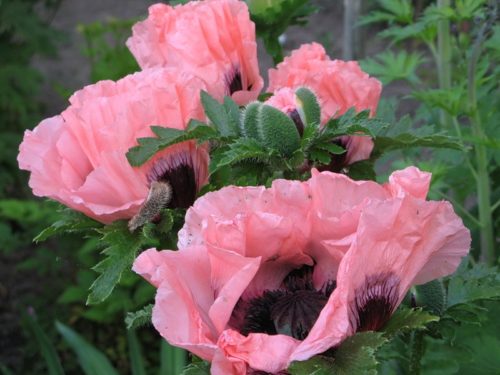
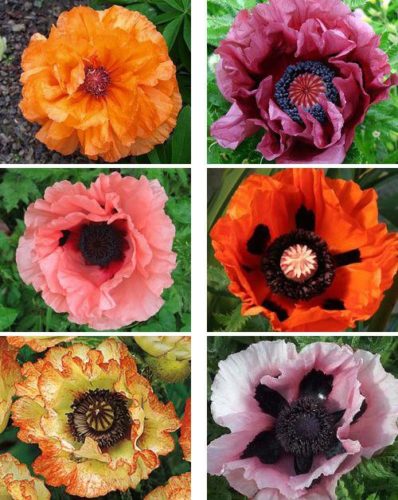
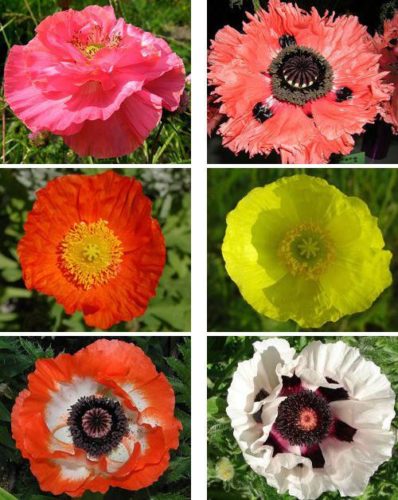
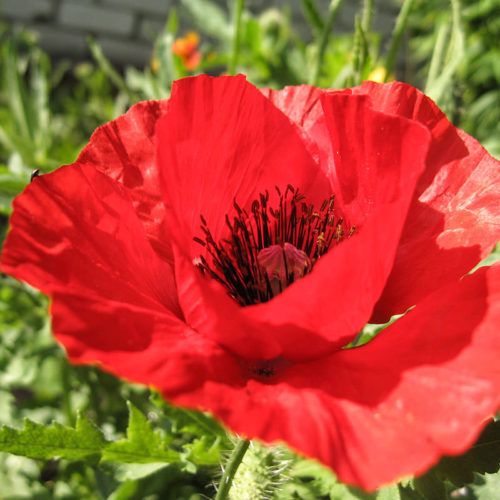
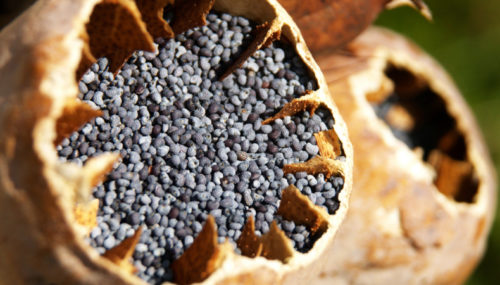
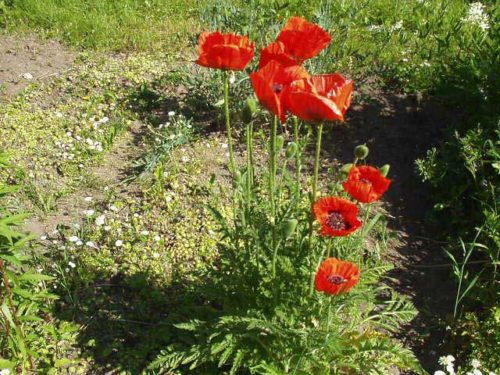
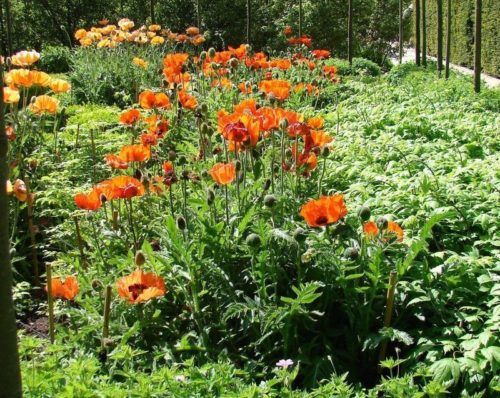
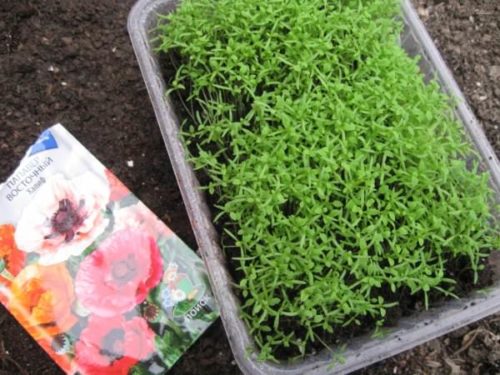
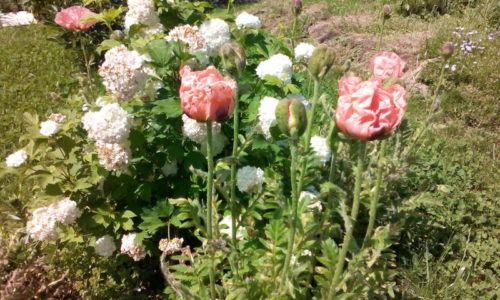
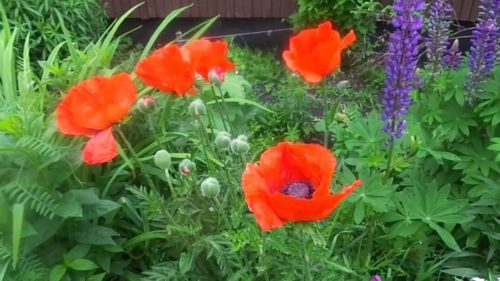
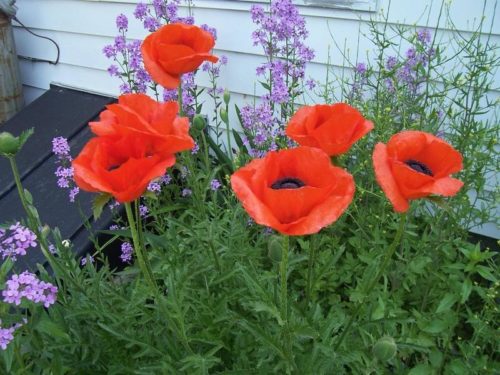
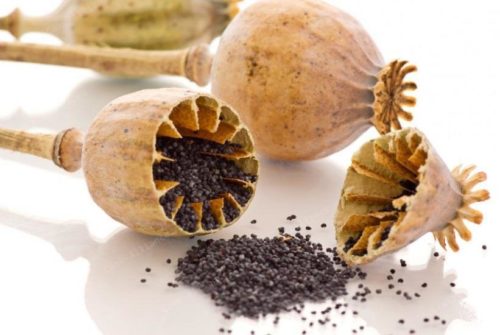

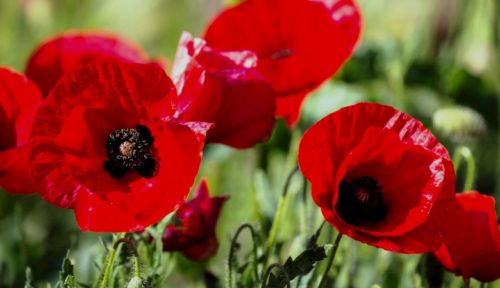
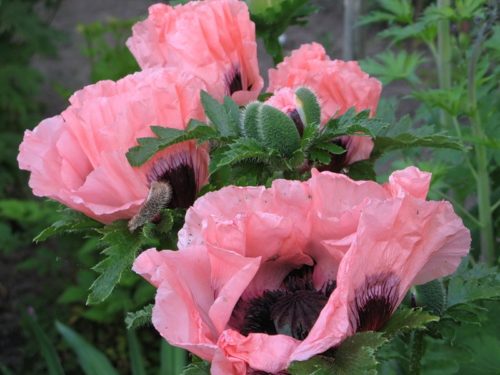
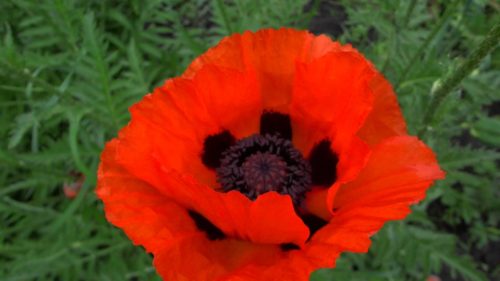
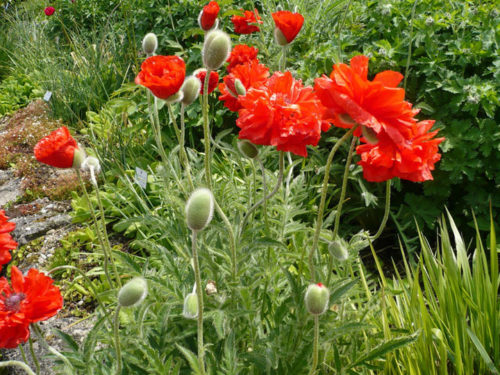
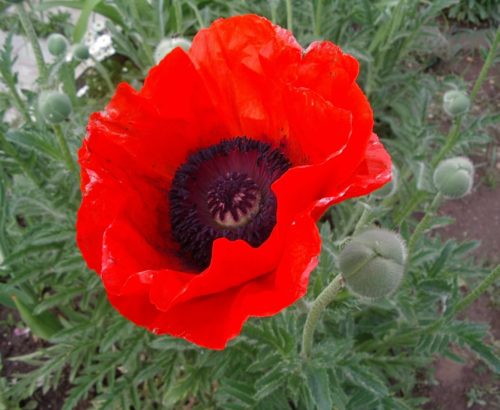












 Start a discussion ...
Start a discussion ...